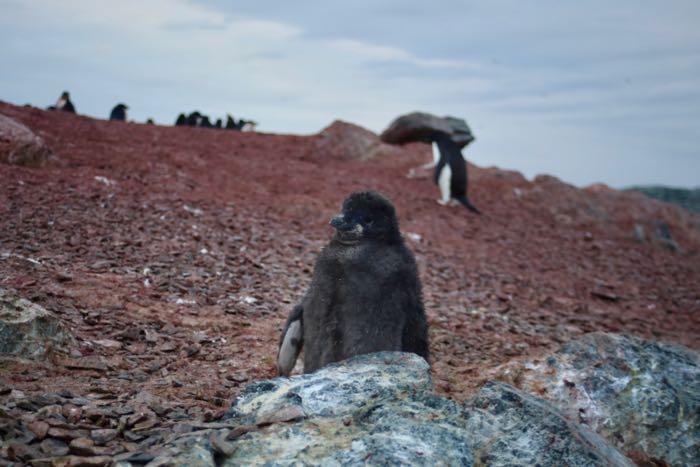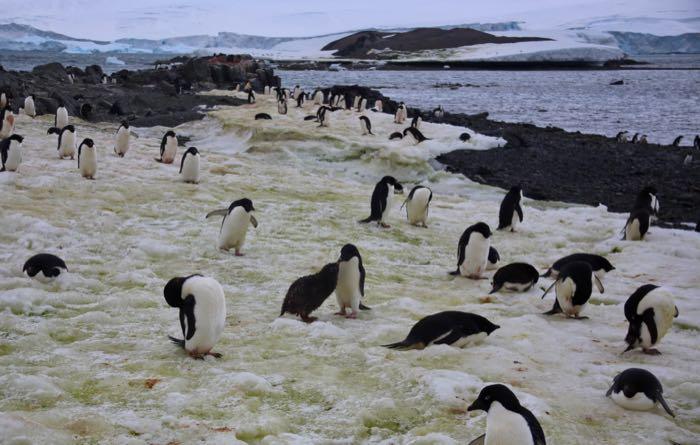Teenage Adélies
Adélie penguins are only found in Antarctica, where they are a common sight on the coastlines. I've seen estimates of their population ranging from 2.5 million to upwards of 3.7 million breeding pairs. They typically gather in groups called colonies during the breeding season. Most adults have arrived at their breeding grounds by November, when couples carefully construct a "cozy" nest out of small rocks. The female lays her eggs in December - summertime in Antarctica – and both male and female take turns incubating the 1-2 eggs for 12-day stretches while their partner goes out into the ocean to feed (mostly on krill). By the time I saw the penguins in early February, the chicks were molting or losing their fluffy baby feathers, which are replaced by the smooth, streamlined, waterproof feathers of the adult birds in preparation for life in the water. Typically, by March, the adults and their young return to the sea.
 A young Adélie penguin on Edwards Island #4 in the Amundsen Sea has not yet completed the process of molting, or replacing young, downy feathers with smooth, adult feathers.
A young Adélie penguin on Edwards Island #4 in the Amundsen Sea has not yet completed the process of molting, or replacing young, downy feathers with smooth, adult feathers.
Young Adélies that are just a little too young to head out on their own, but old enough to know exactly what they want and not the least bit afraid to be excessively demanding of the adults in their lives kind of remind me of some teenagers I know (or, like, all the teenagers I know). Observe this series of a mostly-grown chick in hot pursuit of its parent, stridently insisting it was time to be fed. Apologies in advance for including a few blurry images - it was hard to keep up with the chase.
 Adélie chick pursues its parent in hopes of getting some food
Adélie chick pursues its parent in hopes of getting some food











 Adélie chicks are totally reliant on their parents to bring them food until they have finished molting. This chick pursues an adult relentlessly, falling down and getting back up to continue the chase. On Edwards Island #4 in the Amundsen Sea off the southwest coast of Antarctica.
Adélie chicks are totally reliant on their parents to bring them food until they have finished molting. This chick pursues an adult relentlessly, falling down and getting back up to continue the chase. On Edwards Island #4 in the Amundsen Sea off the southwest coast of Antarctica.

Comments
Add new comment